How to Create Stunning Scroll-Triggered Animations in Elementor Pro: A Step-by-Step Guide
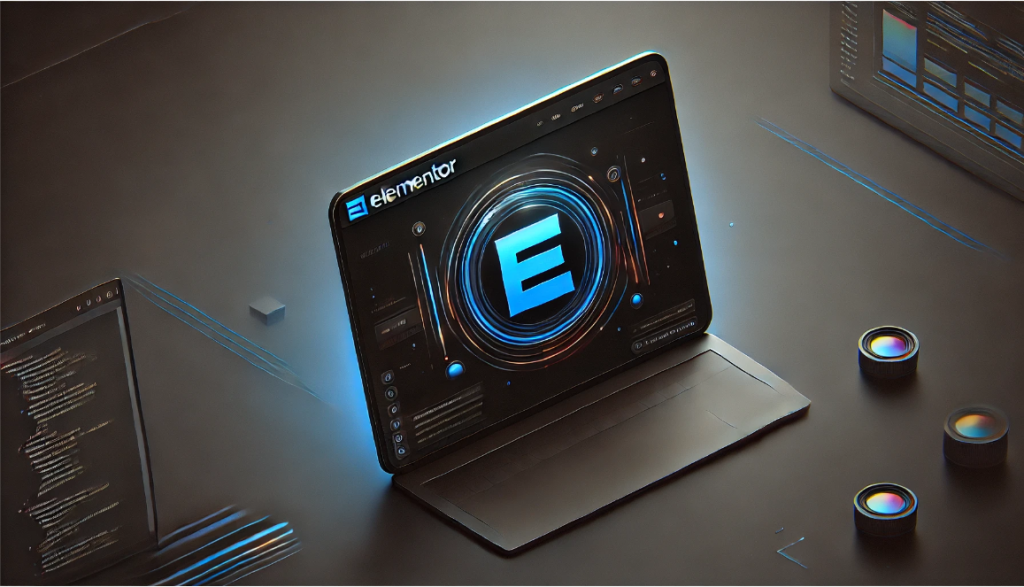
Scroll-triggered animations can be a game-changer for your website, enhancing its interactivity and making the content more engaging. As users scroll down, animations bring depth to your page, grabbing attention and making the browsing experience more immersive. If you’re using Elementor Pro, adding these animations is straightforward. Here’s a guide to help you get started and make the most of these effects, including parallax animations for a more layered design.
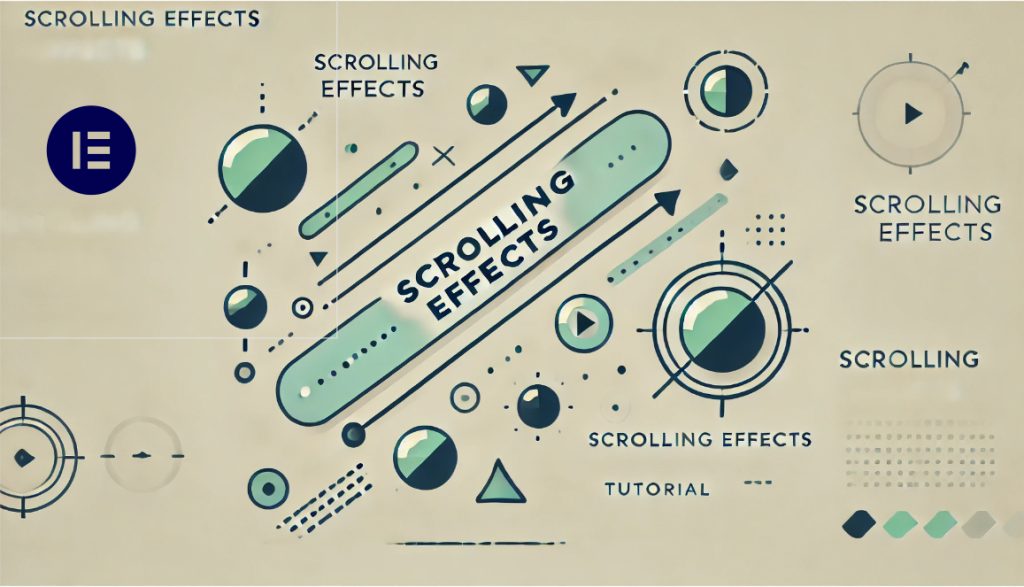
Why Use Scroll-Triggered Animations?
These animations have some significant benefits:
- Highlight Important Elements: Animations naturally draw attention, helping you emphasize critical sections of your site.
- Improve User Engagement: As content reveals itself gradually, users are more likely to stay engaged.
- Tell a Story: How content unfolds can guide the user through your page, step by step, keeping their interest.
With Elementor Pro, it’s easy to implement these animations and bring your website to life.
Step 1: Setting Up Your Page Structure in Elementor Pro
Before you start animating, you need to set up the basic structure of your page. For example, let’s say you’re creating a hero section with a headline, an image, and supporting text.
Creating a New Section:
- Open Elementor, add a new page, and use Elementor Edit to go to the edit page.
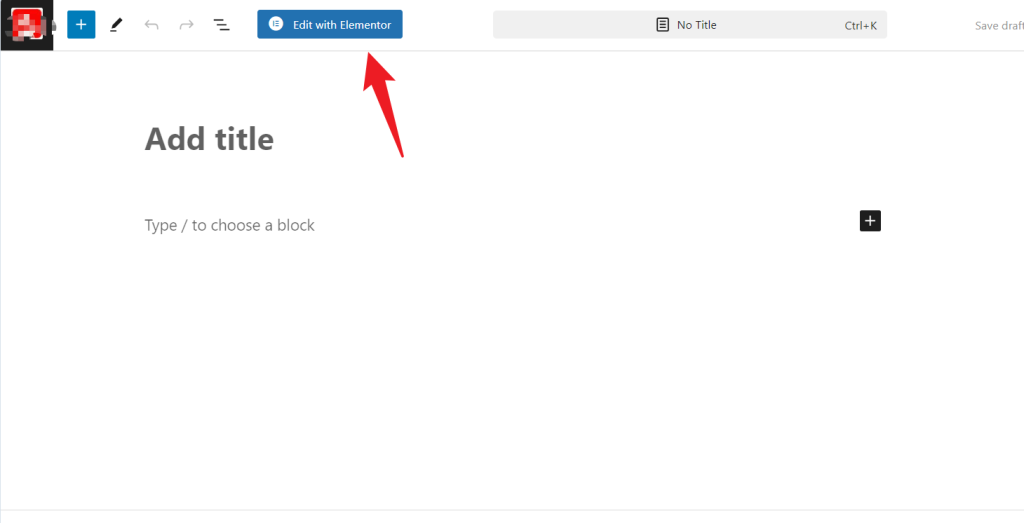
- Click the “Add New Container” button on the page.

- Select a two-column layout with the left side to add textual content (such as a title and supporting text) and the right side to add an image for visual enhancement.
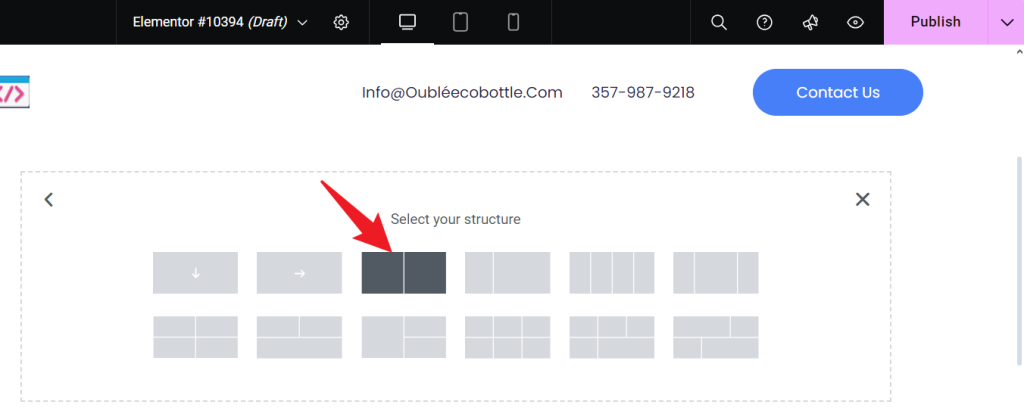
Add content:
- Left column: Add a title widget and a text widget to display the primary information on the page.
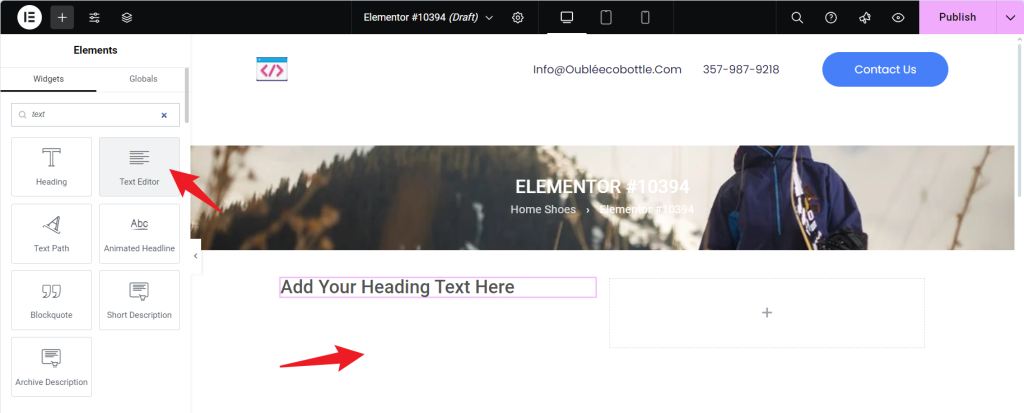
- Right column: add an image widget to place a relevant visual image to add visual appeal to the page.
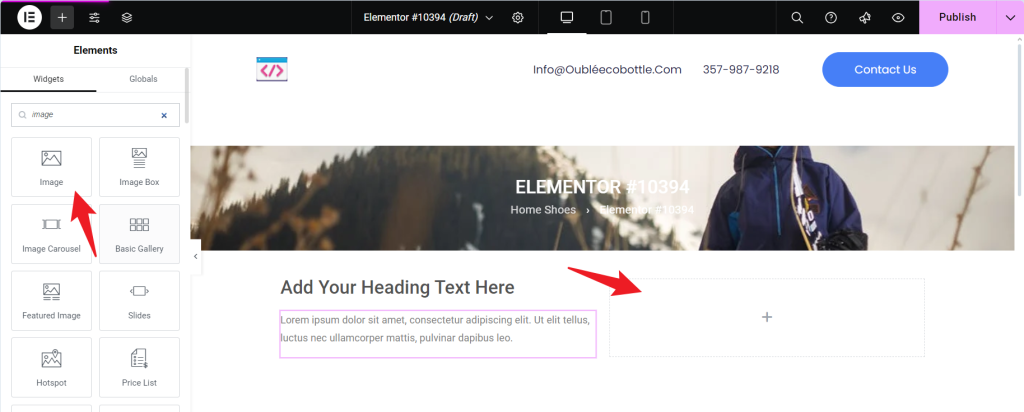
Each block can be modified to complete the desired elements. This simple setup sets the stage for an effective design before you start adding animation.
Step 2: Adding Scroll Animation to Your Headline
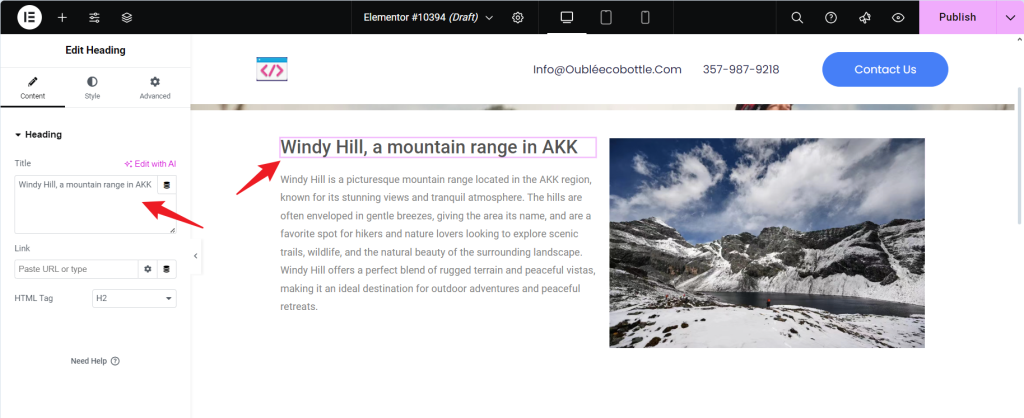
Let’s animate the headline so it smoothly slides in from the left as the user scrolls down.
Selecting the Heading Widget:
- Click on the Heading widget to open its settings.
Enabling Scroll Effects:
- Go to the Advanced tab.
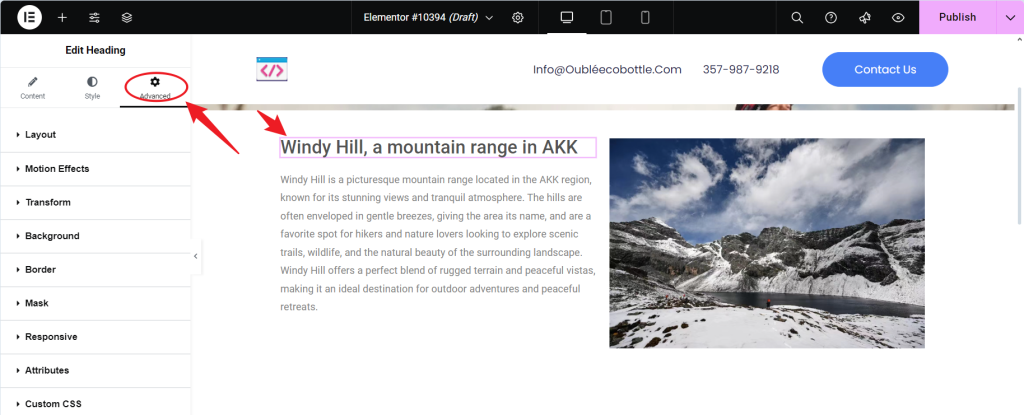
- Under Motion Effects, turn on Scrolling Effects.
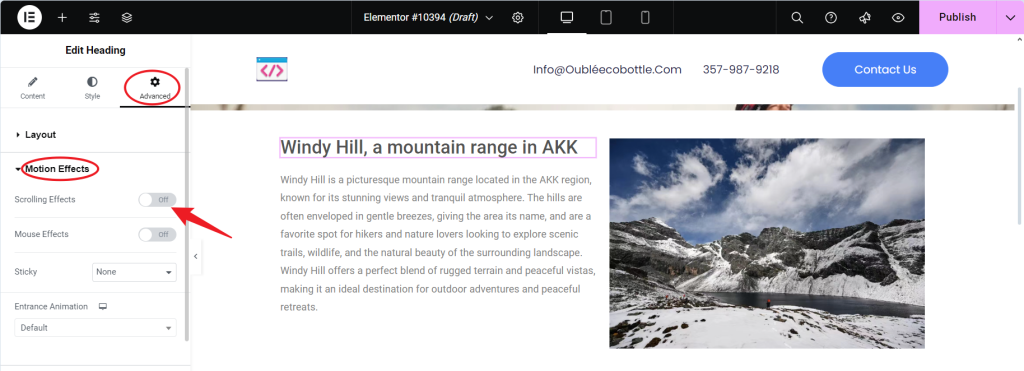
Setting the Horizontal Scroll:
- Enable the horizontal scroll effect.

- Set the direction to “left to right.“

- Adjust the speed to around 4 for a smooth, visible effect.
Preview:
When you scroll the page, you’ll see the headline slide in from the left. You can tweak the speed and direction until you get the desired effect.
Step 3: Adding a Parallax Effect to the Image
To make your page more dynamic, we’ll now add a parallax effect to the image. The image moves at a different speed from the text, creating a layered, 3D-like effect.
Selecting the Image Widget:
- Click on the Image widget and open its settings.
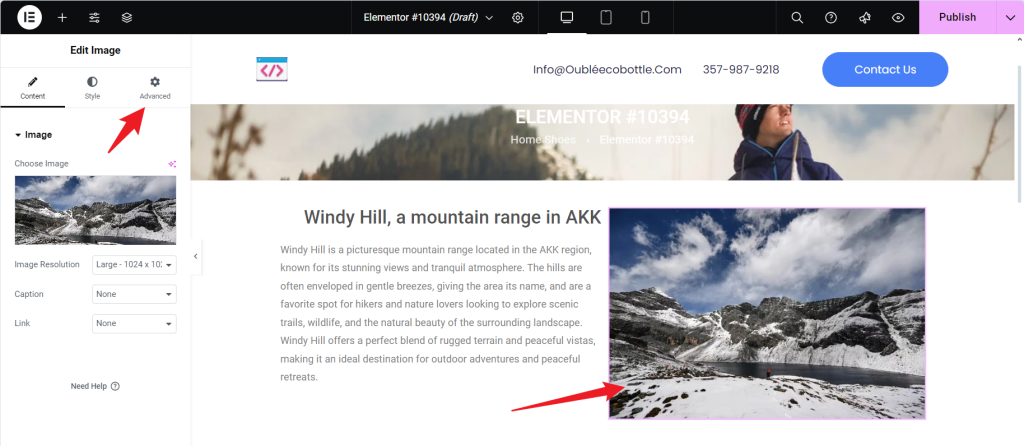
Enabling Scroll Effects:
- Under the Advanced tab, turn on Scroll Effects.
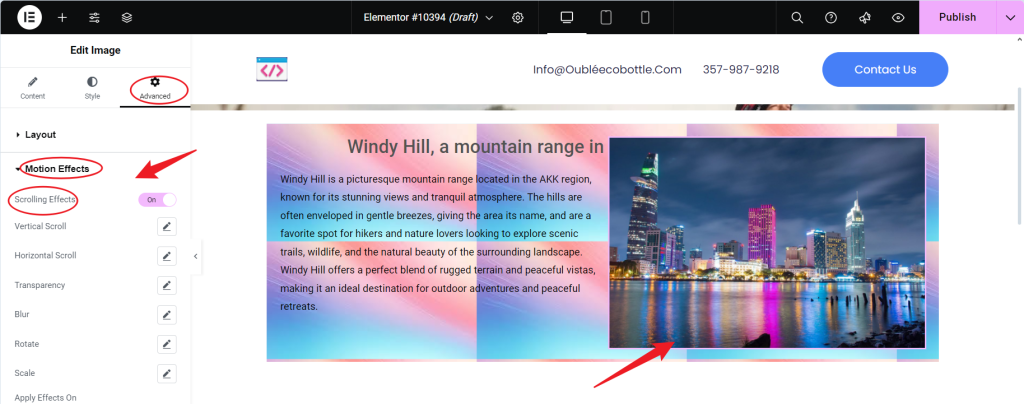
Applying Vertical Scroll:
- Enable the vertical scroll and set the speed to around 1.5. This creates a subtle, smooth parallax effect, with the image moving more slowly than the text.

Adding Opacity Changes:
- Enable Transparency under the scroll options.

- Set the Transparency level to range from 0% (fully transparent) to 100% (fully visible), allowing the image to fade in gradually as the user scrolls down the page. Adjust the viewport slider to control when the fade effect begins and completes, enhancing the scrolling experience with a smooth visual transition.

This will make the image gradually appear, adding depth to the visual experience.
Step 4: Creating a Layered Visual with Parallax
To enhance the design even further, you can add parallax effects to other elements, such as background images.
Adding a Background Image:
- Click on the outer container of your section and go to the Style tab.
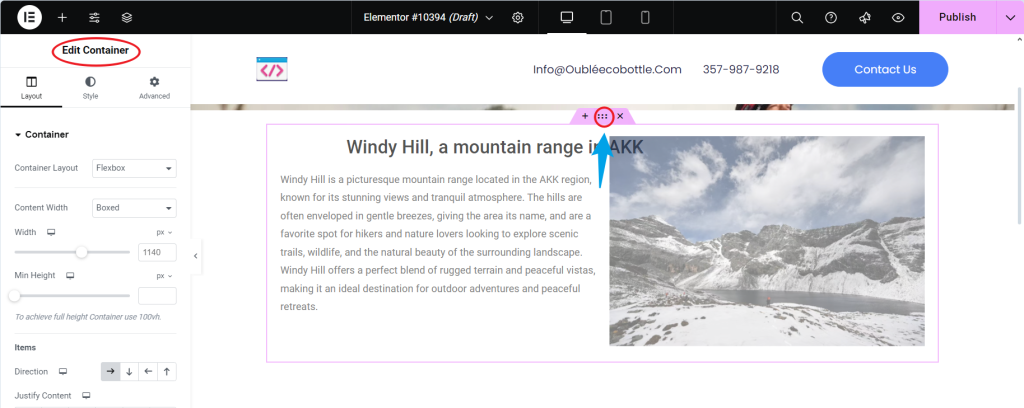
- Add a background image.
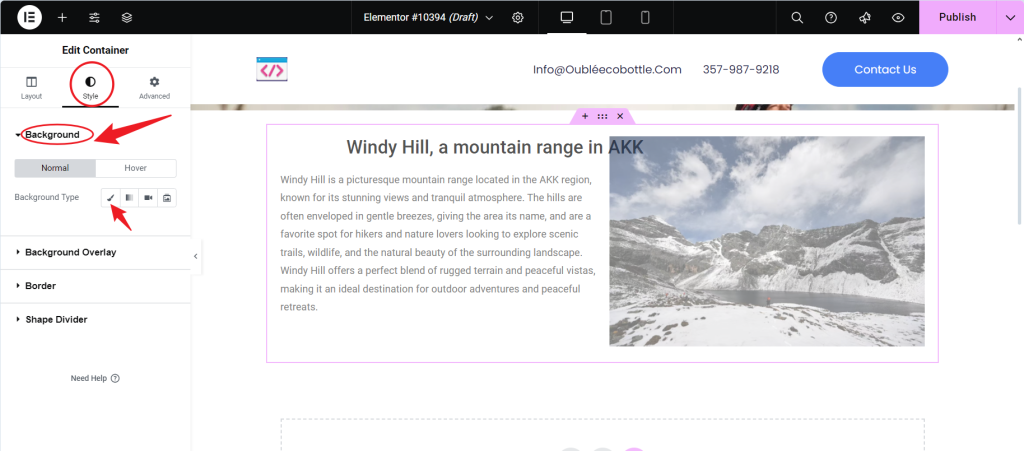
Enabling Scroll Effects for the Background:
- In the Advanced tab, enable Scrolling Effects.
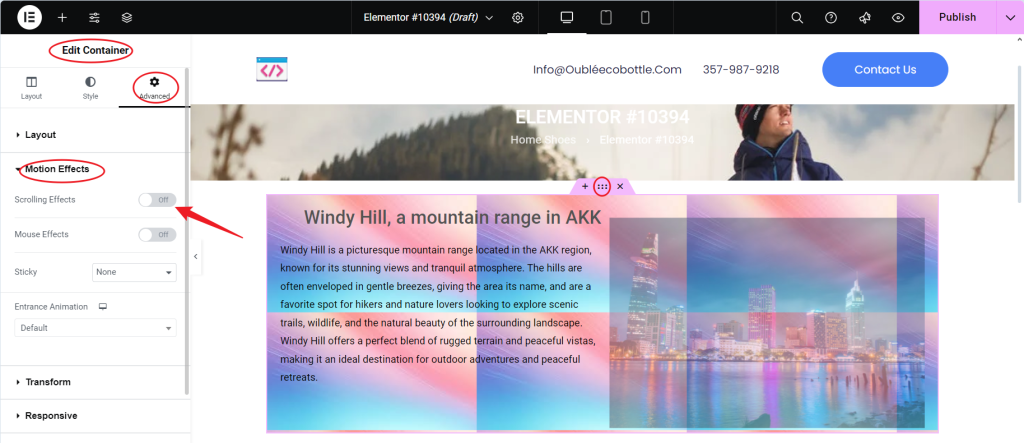
- Set the vertical scroll speed to around 0.5, so the background moves slower than the foreground elements.
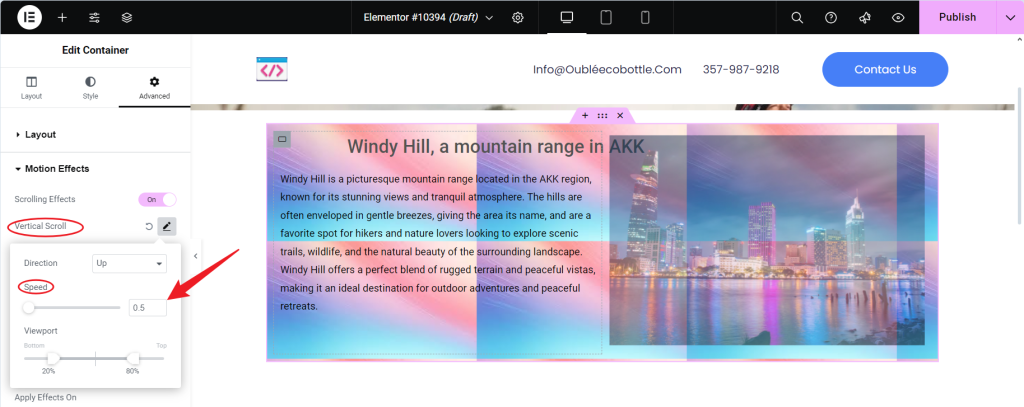
Preview:
As you scroll down, you’ll see a fully dynamic effect: the headline slides in, the image moves with a parallax effect, and the background shifts subtly in the back.
Step 5: Add scroll trigger animation for text
Select the text widget:
- Click the text box to enter the setting interface of the text.
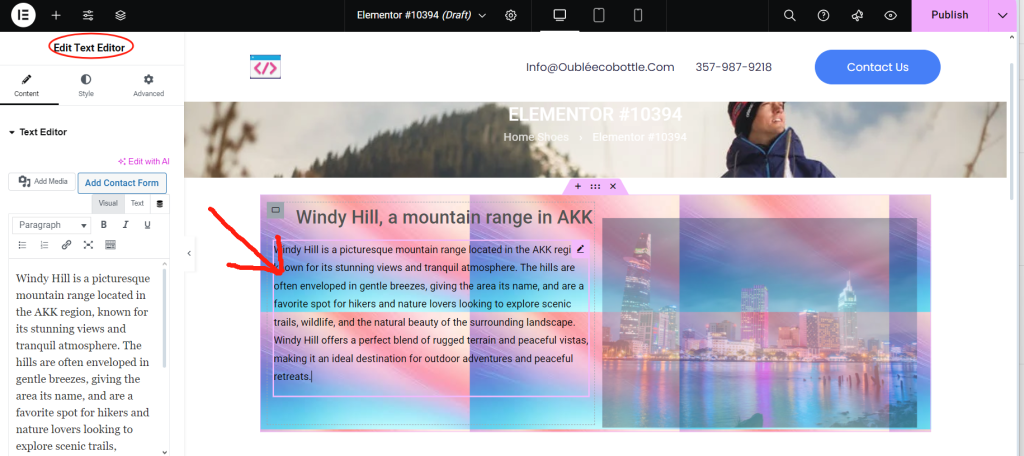
Enable the scrolling effect:
- Go to the Advanced tab.
- Under Motion Effects, enable Scrolling Effects.
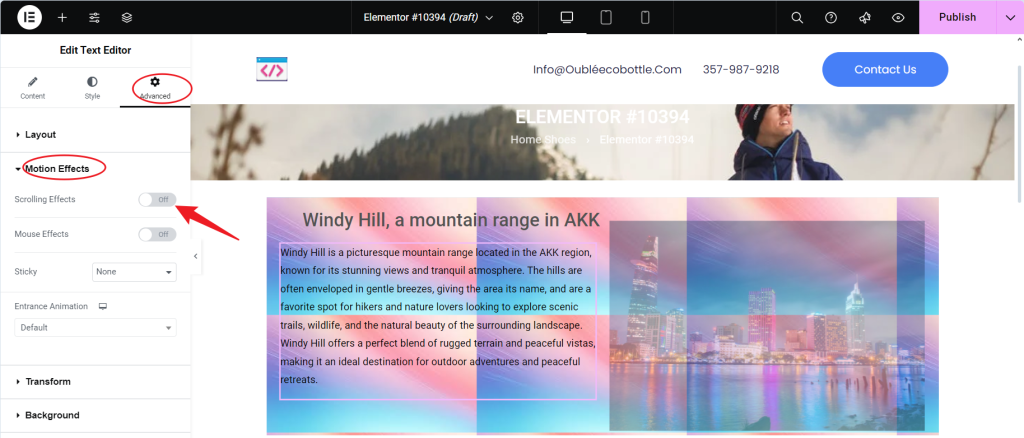
Select the Transparency option to create a fading effect on the text.
Set the transparency animation:
- Set the transparency range from 0% (fully transparent) to 100% (fully visible). The text will fade from transparent to visible as the user scrolls the page, creating a smooth transition.

Set the trigger point:
- In the Scroll Effect settings, you can adjust the Viewport Percentage to specify where the animation starts and ends the scroll. For example, setting the animation to trigger when the user scrolls between 20% and 80% of the page allows the text to appear along with the page content.
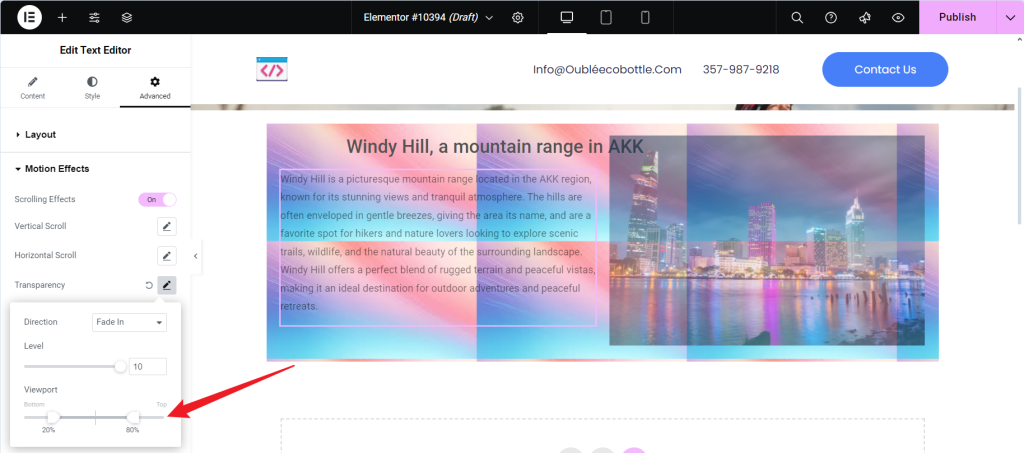
Step 6: Add Slide In Effect
Select the Slide In effect:
- Under the Advanced > Motion Effects tab, select Into Animation, and then select Slide In from the drop-down menu.
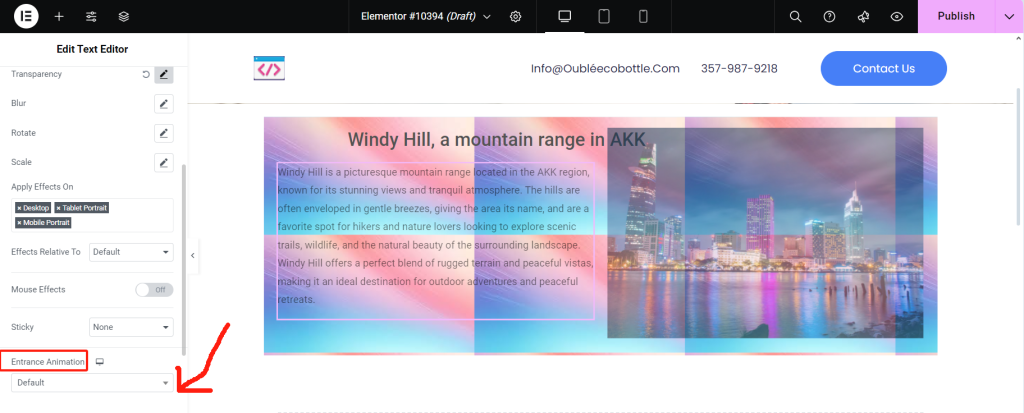
- You can choose Slide In from the left, Slide In from the right, or Slide In from the bottom up, depending on your design needs.
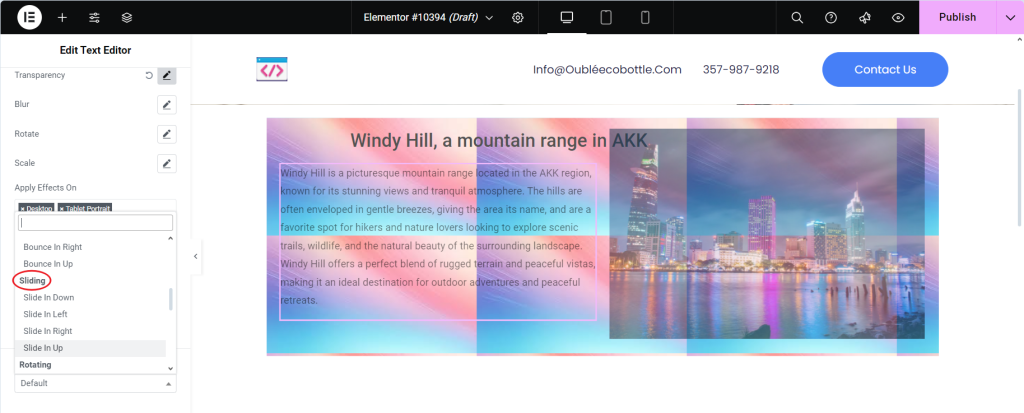
This applies to all scenarios where you want to enhance a web page’s visual appeal and user interactivity.
Step 7: Optimizing the User Experience
Scroll-triggered animations can significantly enhance a website, but you must keep the user experience smooth. Here are some tips:
Keep It Simple: Too many animations can overwhelm the user. Stick to a few well-placed effects to maintain a professional look.
Mobile Optimization: Not every animation works well on mobile devices. In Elementor Pro, you can turn off specific animations for mobile and tablet to keep the site responsive and user-friendly.

Cross-Browser Testing: Scroll animations can behave differently across browsers. Always test your design in popular browsers to ensure consistency.
Conclusion
Scroll-triggered animations and parallax effects can transform your website, making it more engaging and visually appealing. With Elementor Pro’s features, you can implement anything from subtle text animations to complex, layered designs. When done right, these effects guide the user’s attention, tell a story through your content, and create a seamless browsing experience across all devices.
Following these steps, you can create dynamic, immersive web pages that captivate users while keeping the design functional and responsive.


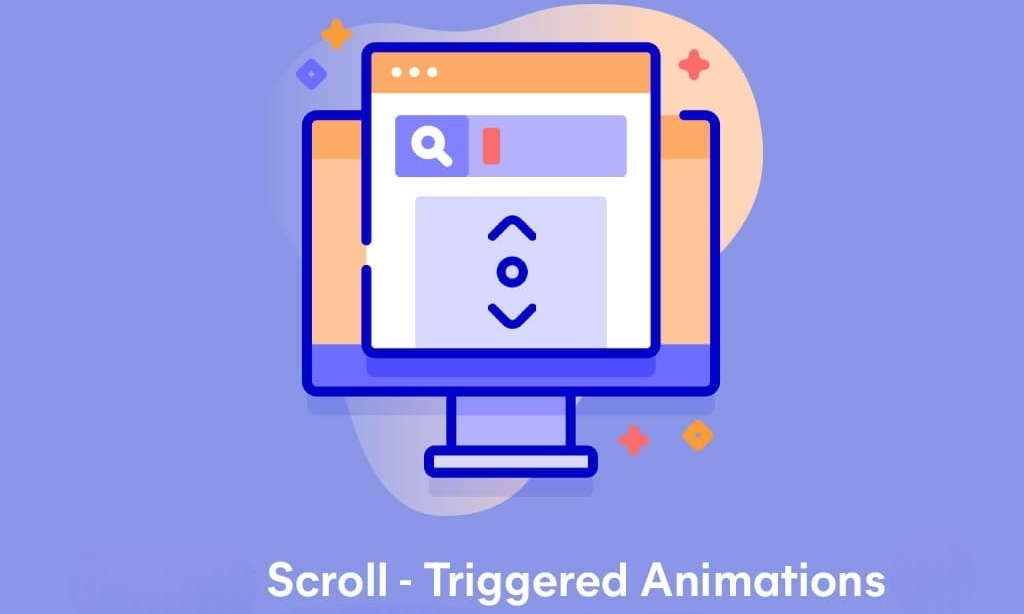
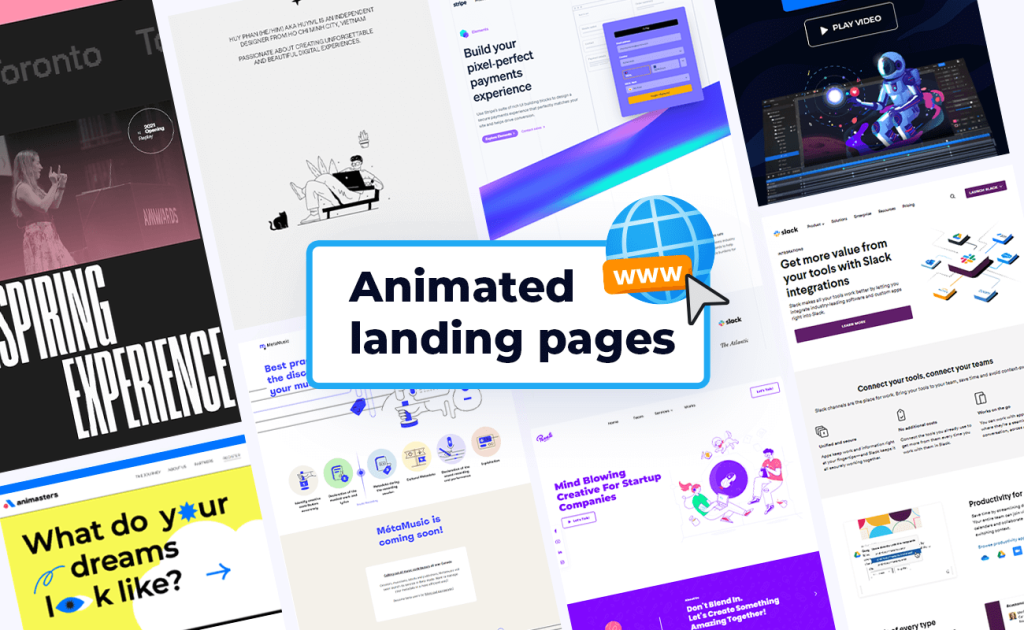
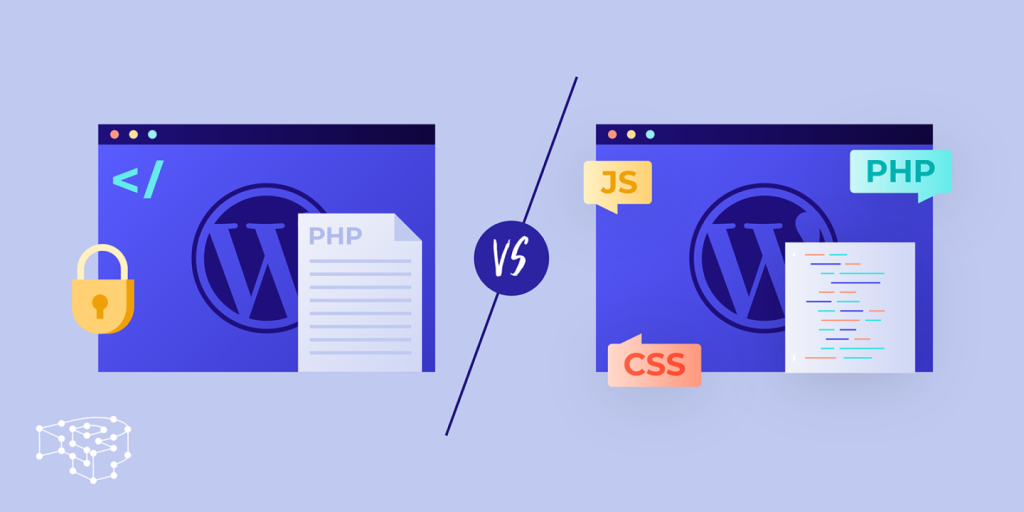
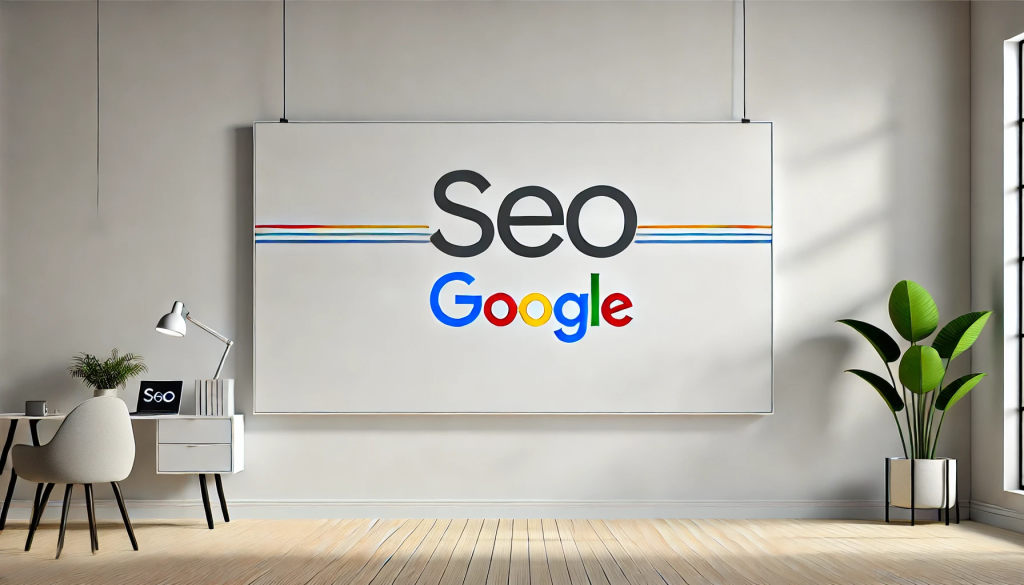

Responses